...
Containers can be moved from one position to another. It adds a "Transfer Event" on the container as well as and stored specimens to keep an audit of these movements and include them in reports.
| Info |
|---|
|
- The 'Parent Site' should be the same for source and destination containers.
- The 'Collection Protocol' and 'Specimen Types' restrictions should match.
- The new positions where to which the containers are being moved to should not be already occupied.
|
Move Containers via UI
| Expand |
|---|
- Go to the containers page, and select the container to be moved.
- Click On the container overview page, click on 'Transfer'.
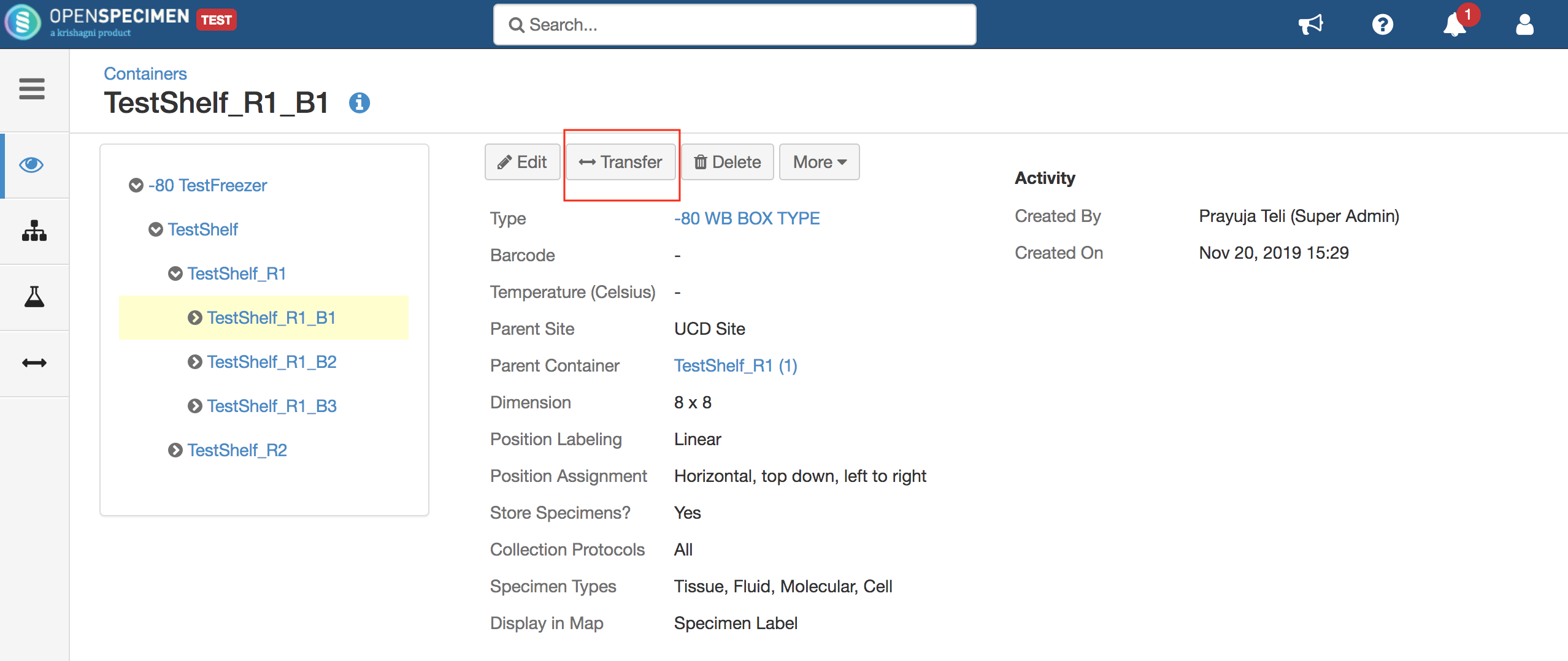 Image Removed Image Removed- .
- The transfer tab is available at each container level, enabling its transfer. Hence a user can transfer a box, a rack, a shelf, etc., from one container to another.
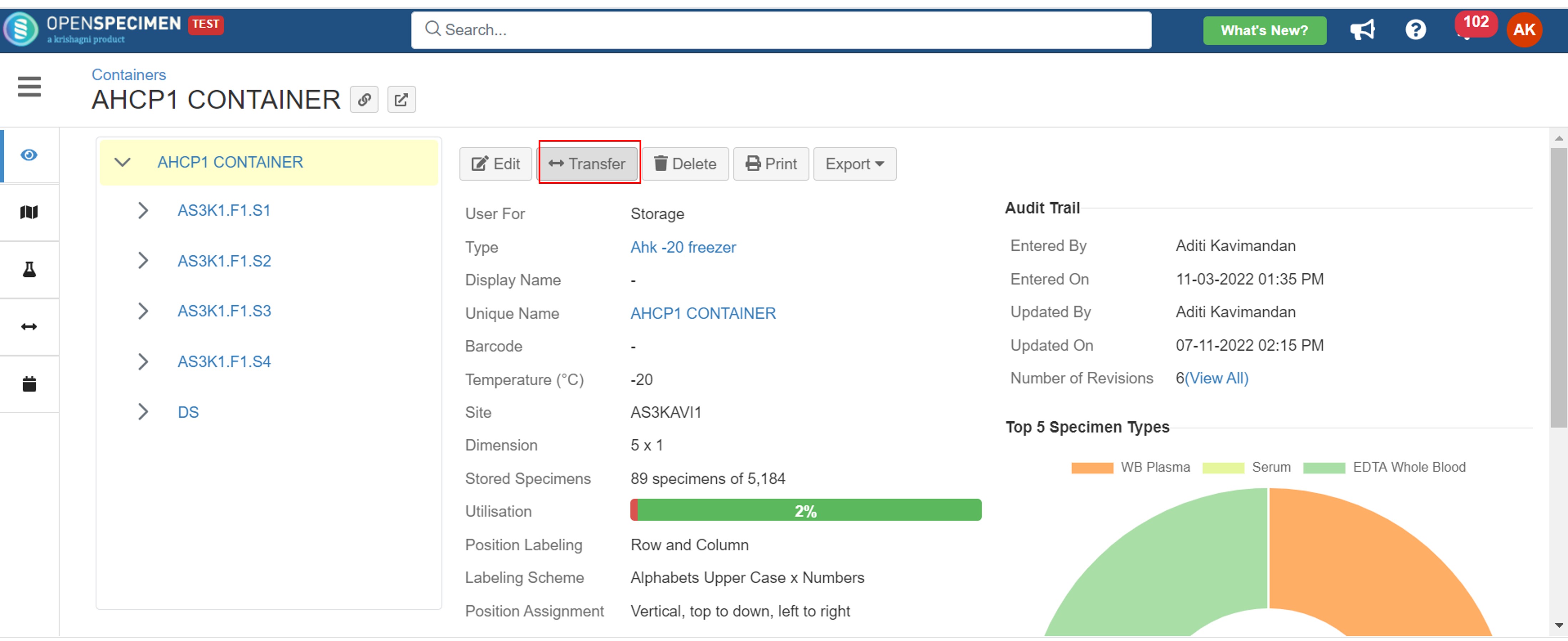 Image Added Image Added
- Select the new container from the 'Parent Container' dropdown list and fill in the other mandatory details such as column number, row number, date & time, reason, etc.
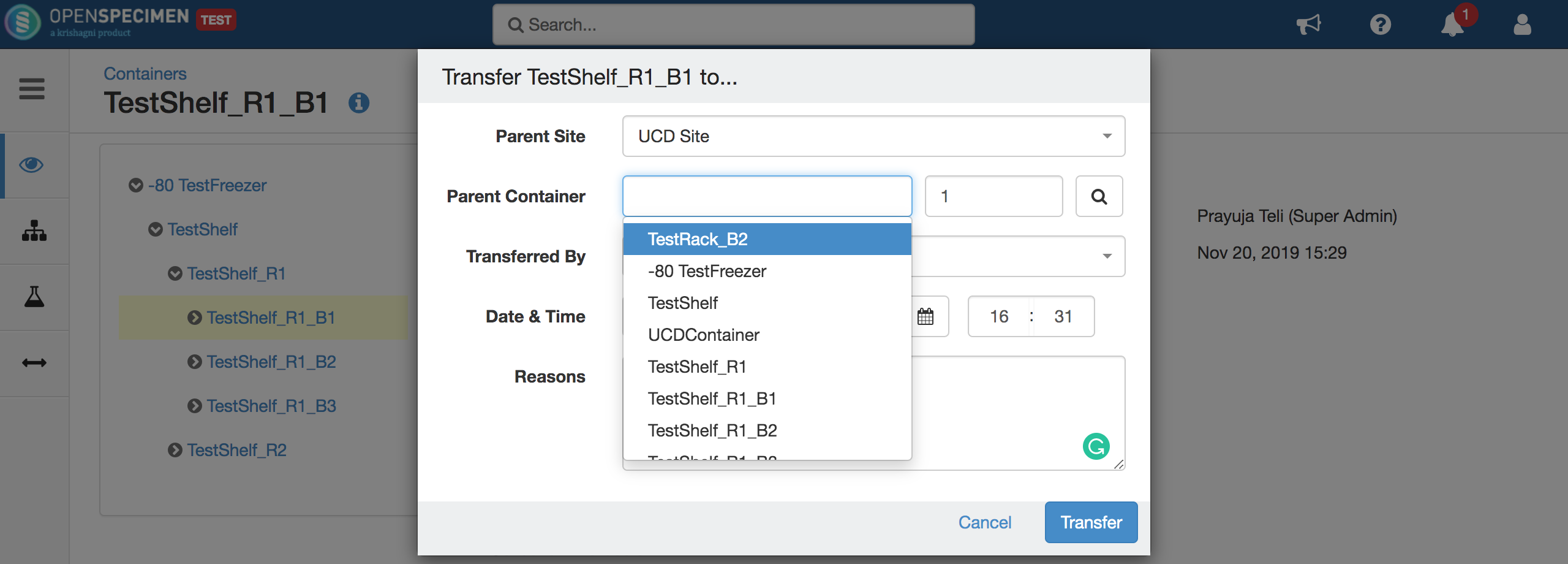 Image Removed Image Removed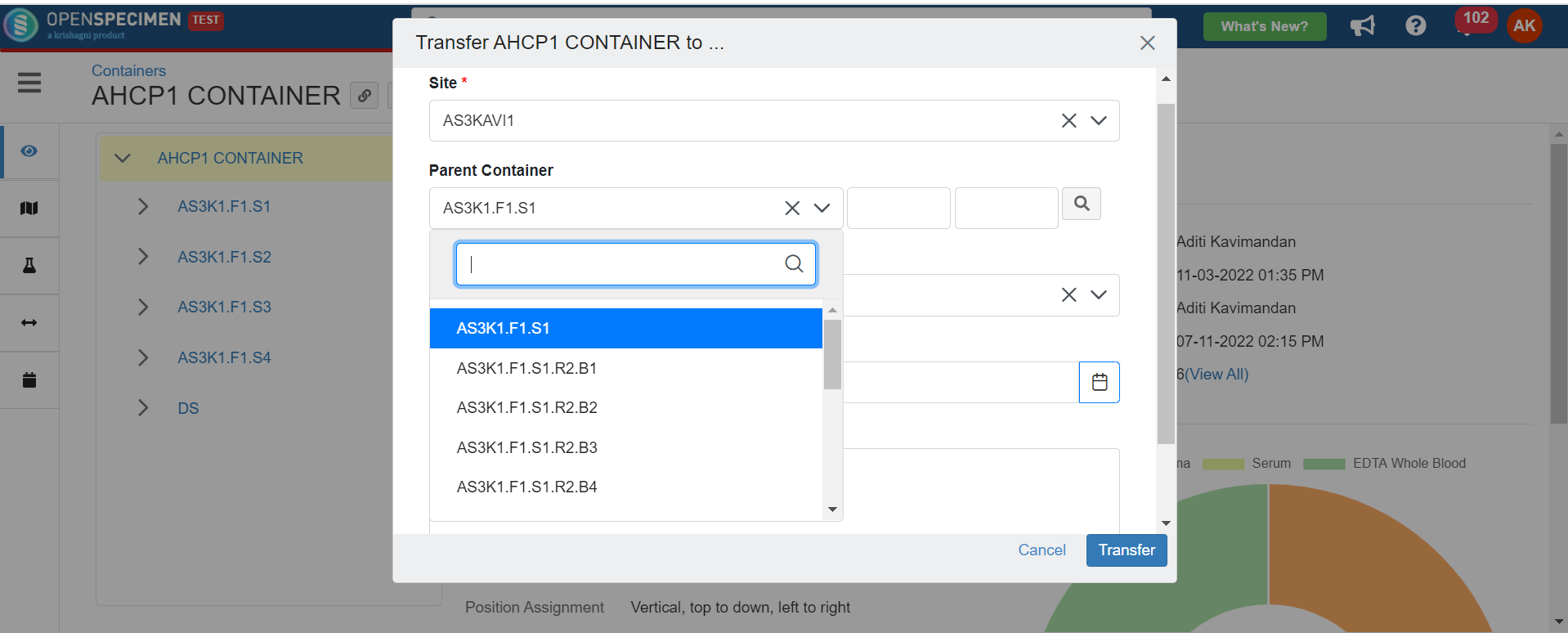 Image Added Image Added
| Note |
|---|
| - The dropdown shows the first 100 values that are available.
- You can click on the "Search" icon (magnifying glass) from the pop-up if you want to select from all to see the containers that are eligible as a parent location for the container to be transferred.
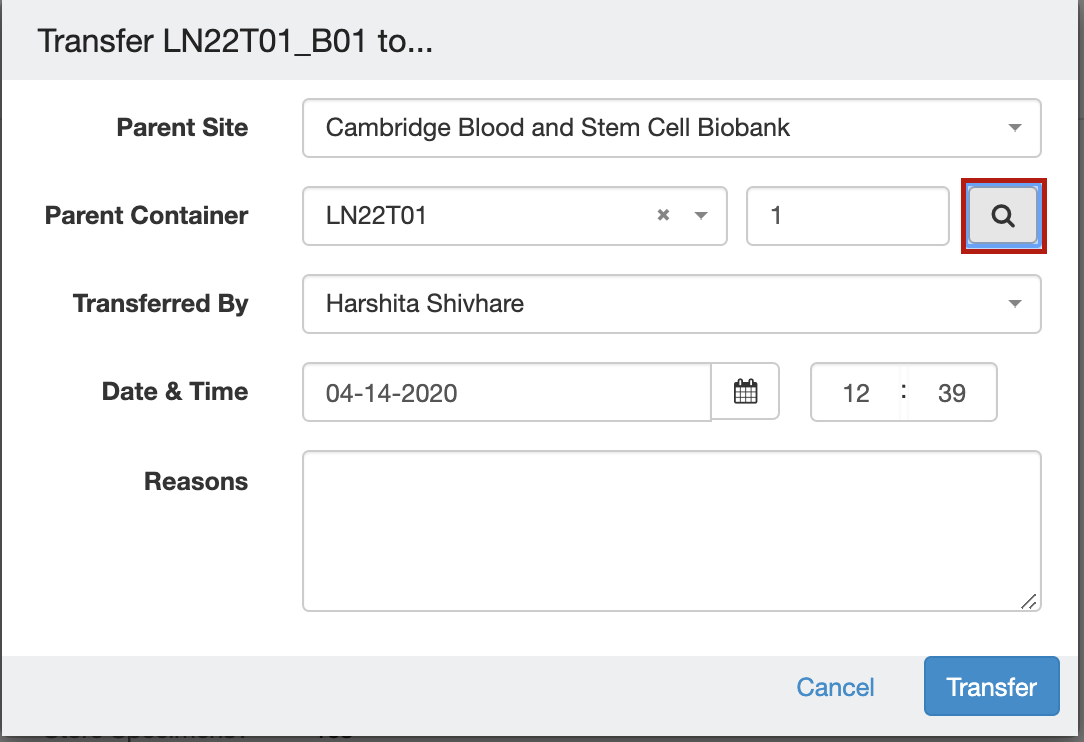 Image Removed Image Removed- the transfer container.
- Alternatively, you can start typing the initials of the container name, and it will appear.
 Image Added Image Added
- Select any container by clicking on "Select".
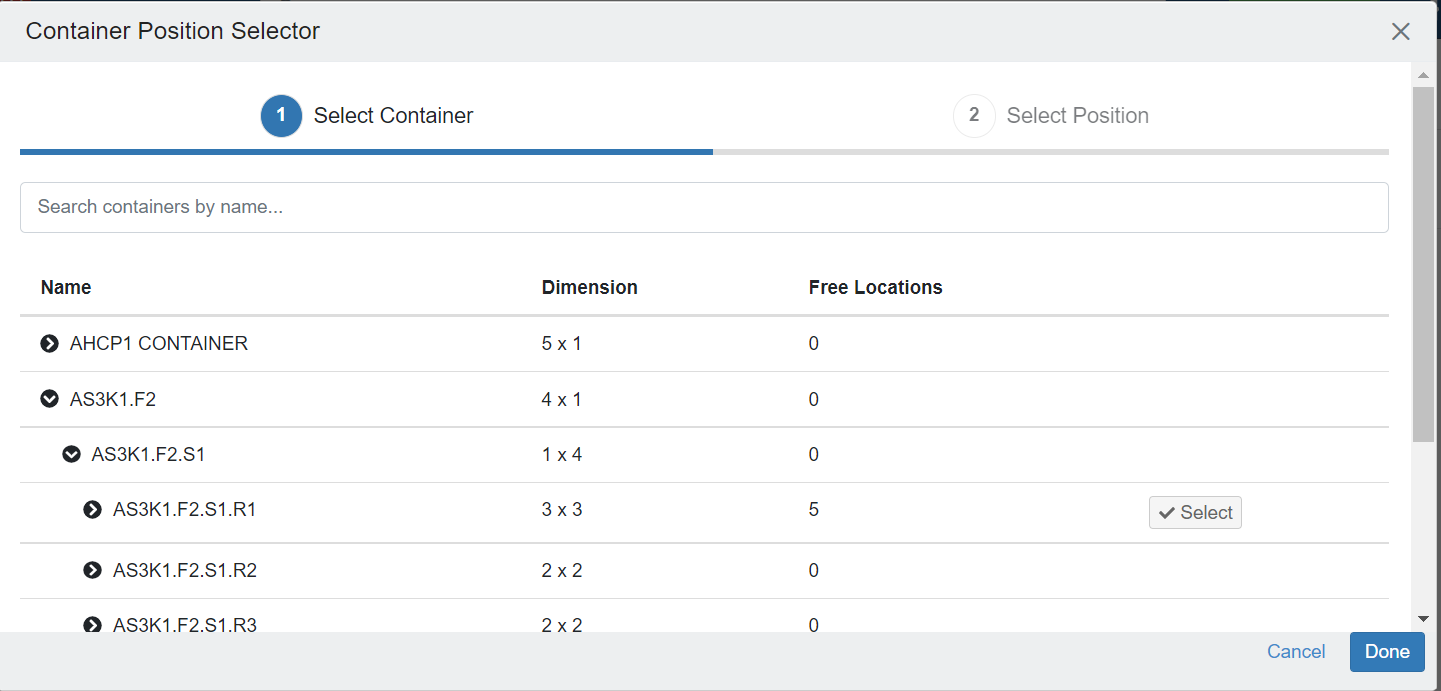 Image Added Image Added
- Choose the location you want to move the container in and click on "Done".
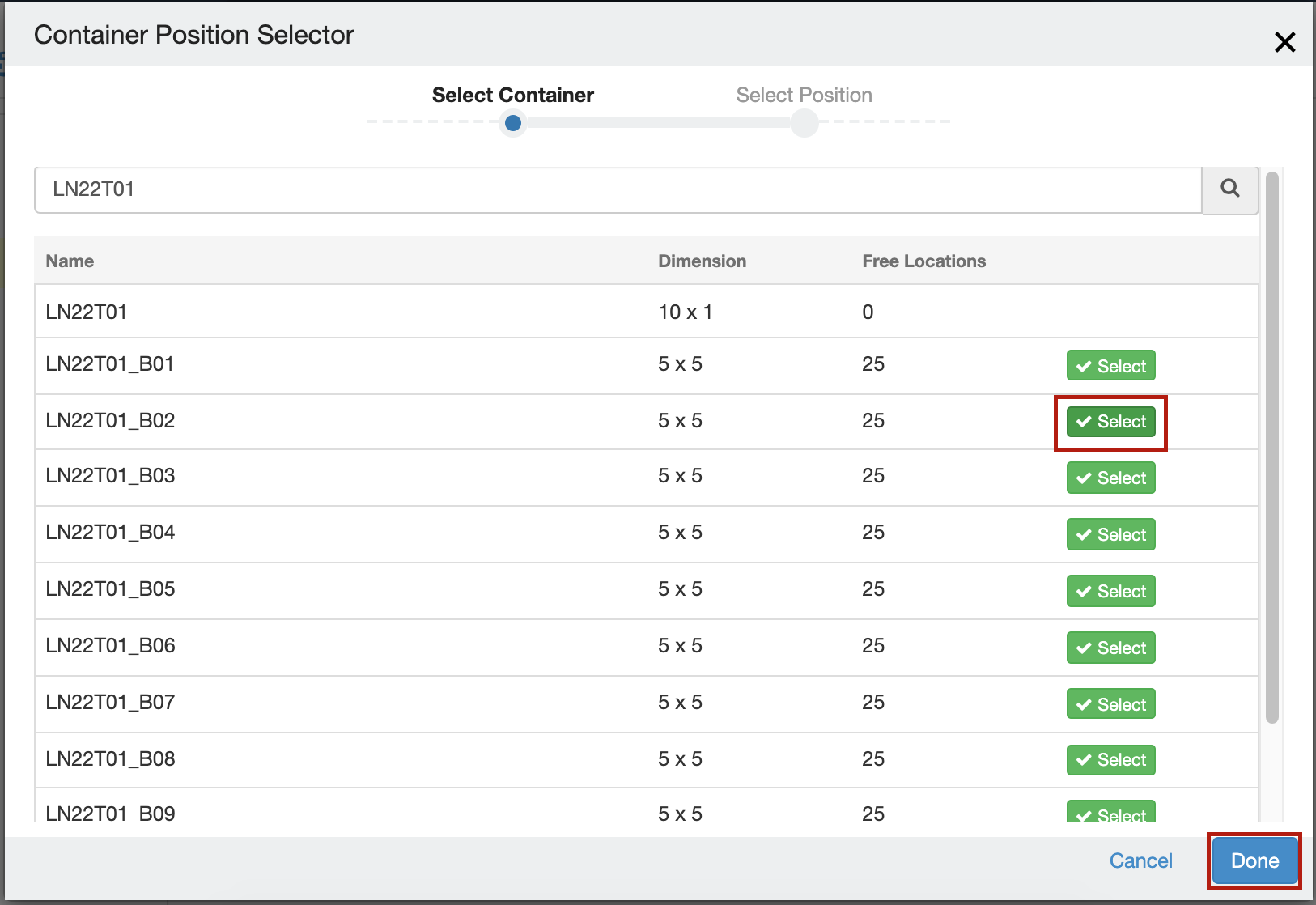 Image Removed Image Removed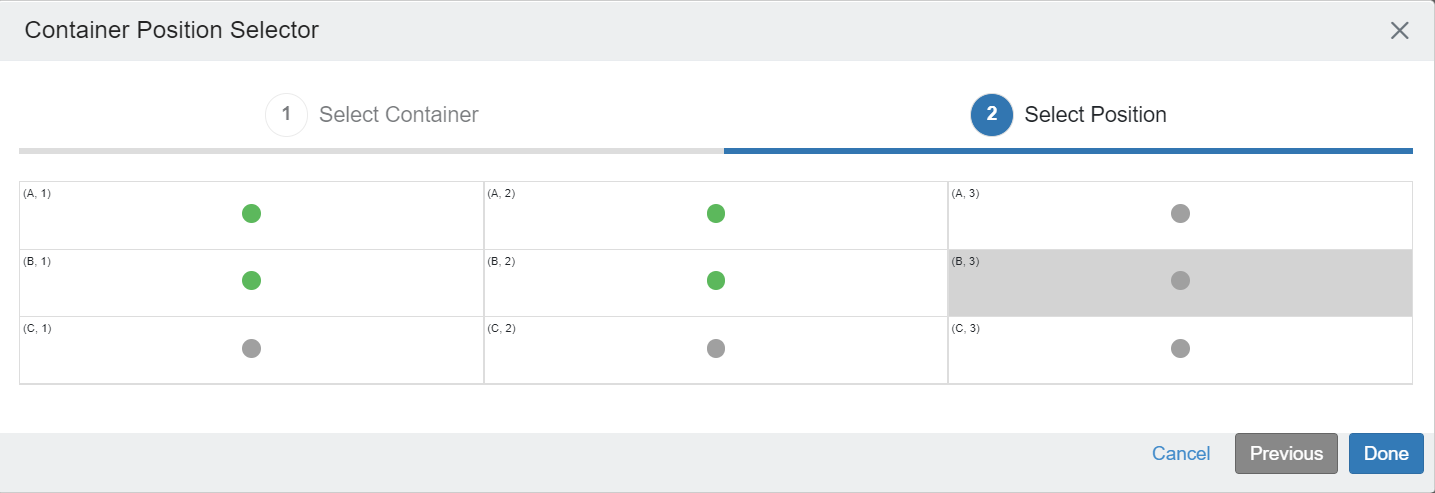 Image Added Image Added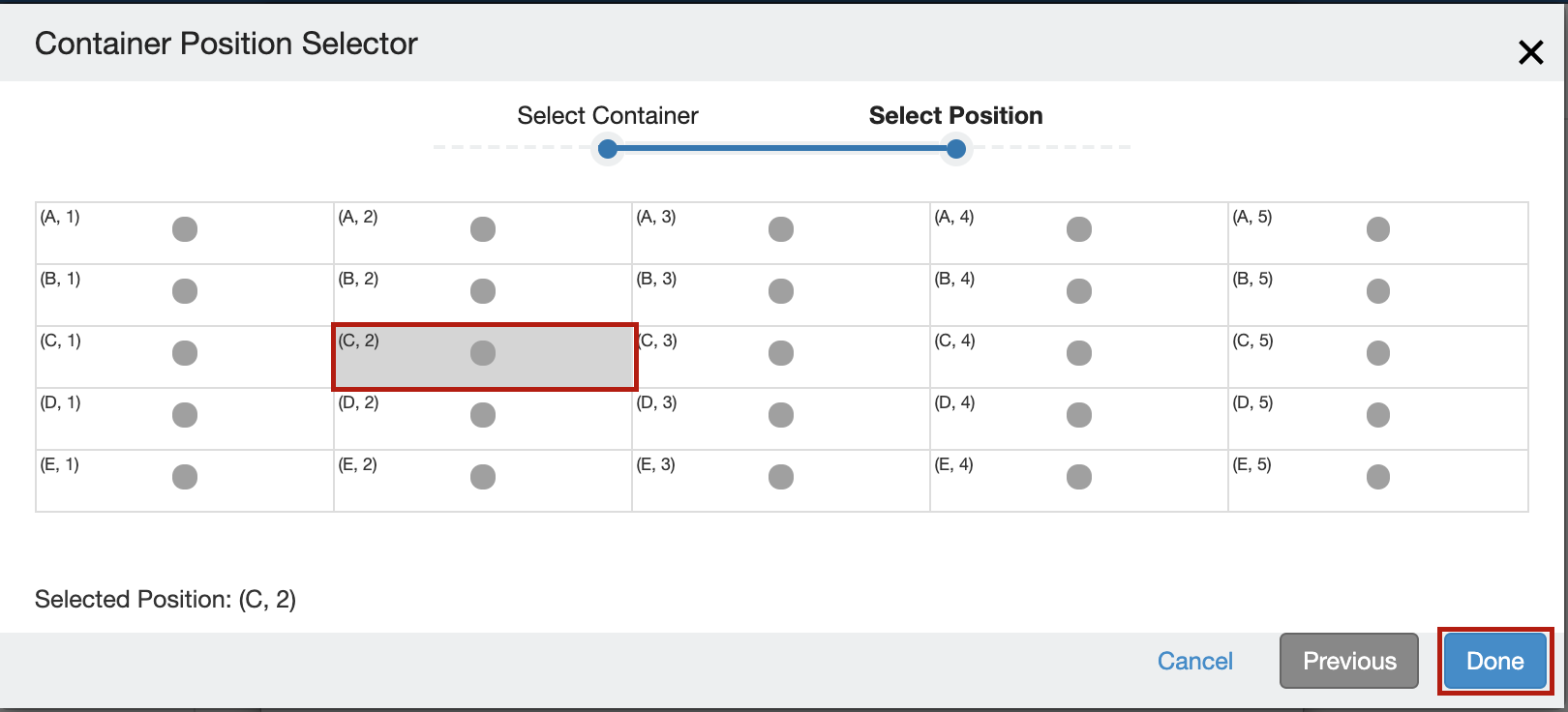 Image Removed Image Removed
|
| Fields | Description |
|---|
| Parent Site Site | The parent site to which the container is to be transferred | | Parent Container | The name of the destination parent container under which the transfer is to be made transferred. A dropdown will show containers specific to the selected parent site. | | Transferred Byby user | User who is performing the transfer. It defaults to the logged-in user data | | Date and Time | The timestamp at which the transfer is made. By default, it is the current datetime | | Reasons | You can specify the reason for the transfer. |
|
Move Containers in Bulk
| Expand |
|---|
- Go to the containers page,
under more - and select 'Import' under more.
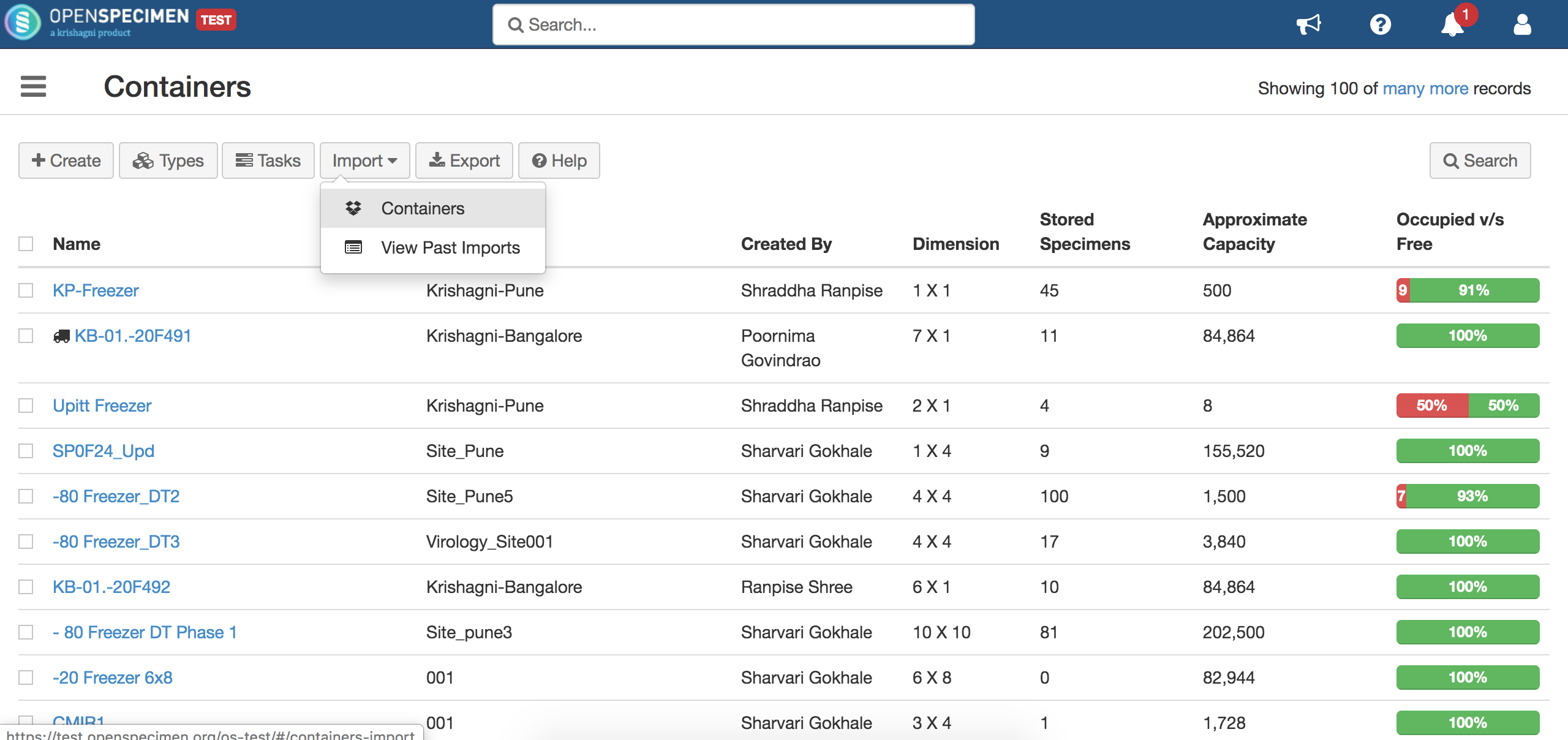 Image Removed Image Removed Image Added Image Added
- On the import page, download the template file and fill
up fields.'Name' (name - in the fields mentioned in the table.
| Column Name | Datatype | Mandatory? (Update) | Description | Validations |
|---|
| Name | String | Yes | Name of the containers that need to be moved |
| It should be an existing and unique name within the system storage | | Storage Location#Parent Container Name | String | Yes | The name of the parent container, i.e., New Location |
| | Storage Location#Column | Integer |
| The new position in its container |
| | Storage Location#Row | Integer |
| The new position in its container |
|
- Once all data is filled, save it as CSV and import the file. Make sure the 'Update' operation is selected.
 Image Removed Image Removed Image Added Image Added
- Optionally, positions can be kept blank, and the system will allocate the next available position in the specified container.
|
Transfer Event
Transfer event created on the container The system creates transfer events for the container which has been moved. The transfer events can be viewed from the 'Transfer Events' tab on the left-hand side.
 Image Removed
Image Removed Image Added
Image Added
If there specimens are specimens stored inside such a box, a transfer event is also created for each specimen as well, along with the container transfer event.
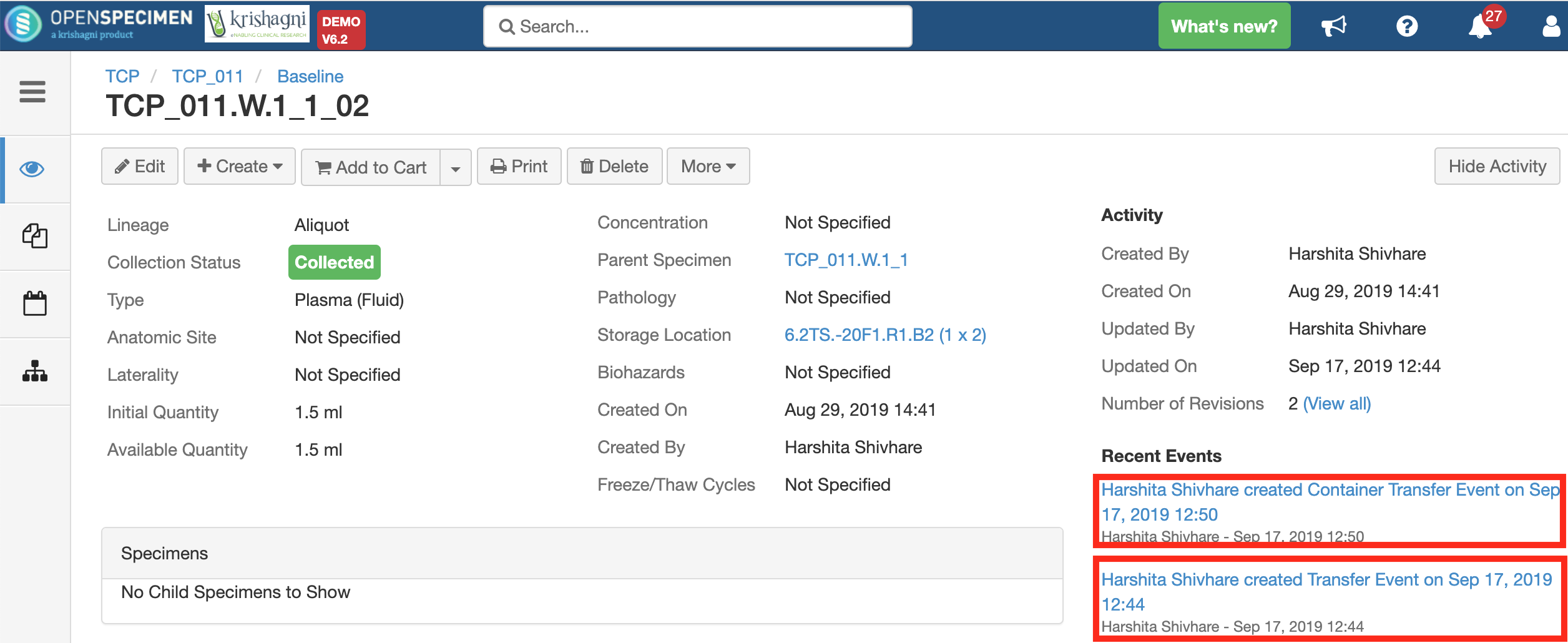 Image Removed
Image Removed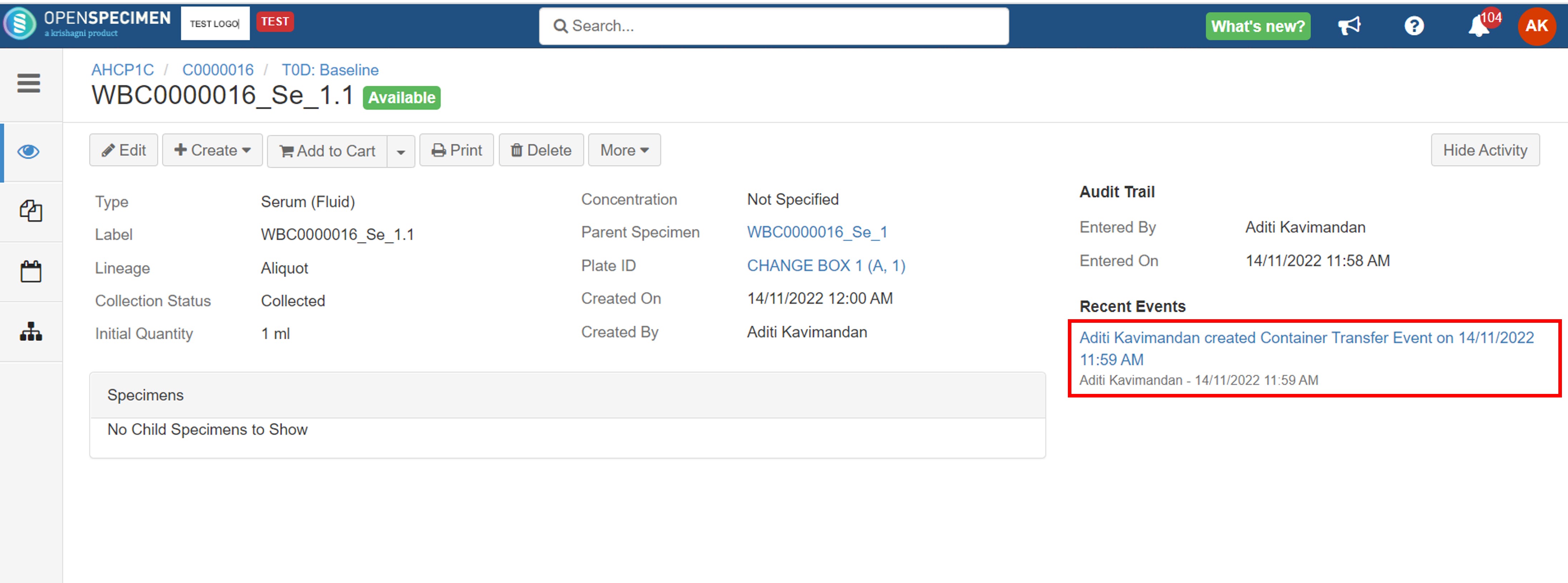 Image Added
Image Added
Clicking on the 'Container Transfer Event' from the 'Specimen Overview' page displays the details about the transferred container.
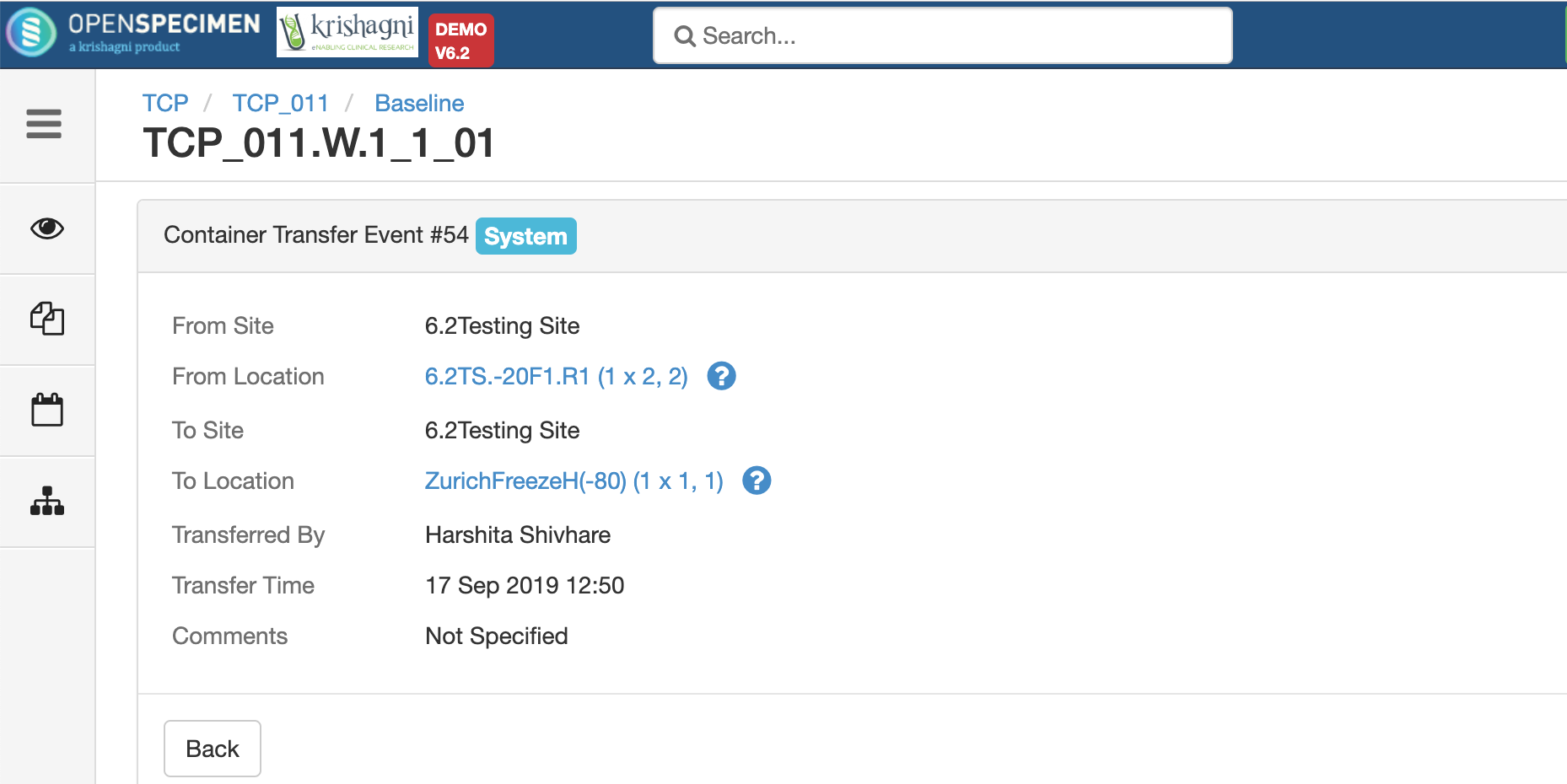 Image Removed
Image Removed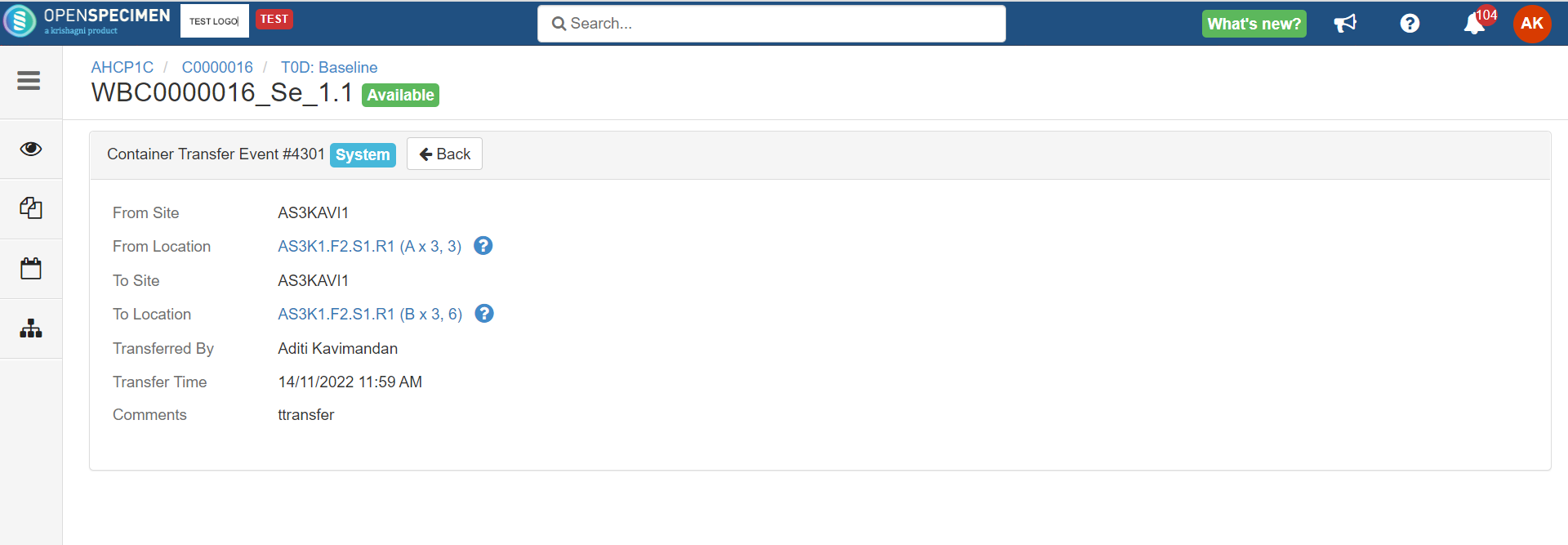 Image Added
Image Added

















